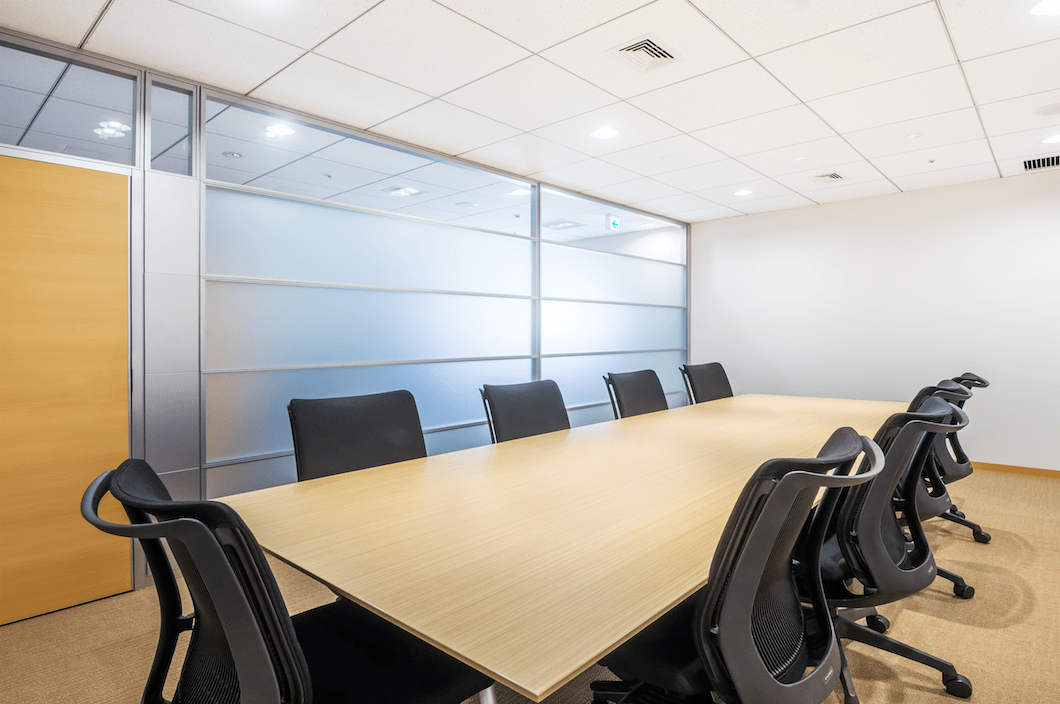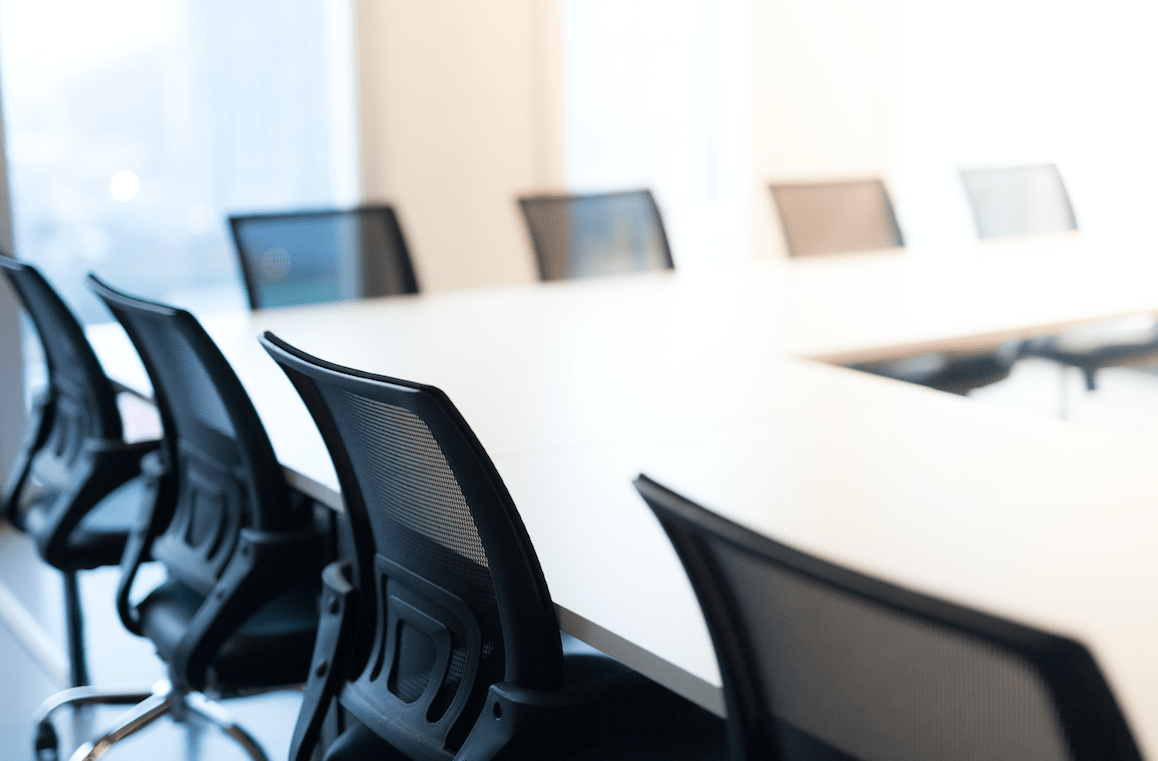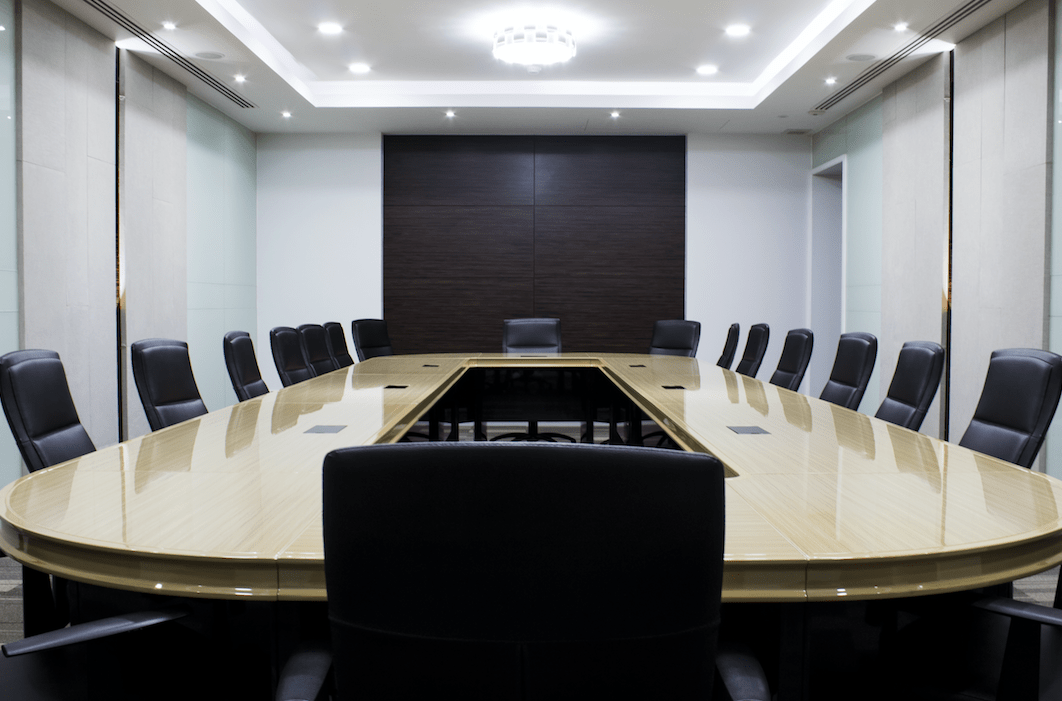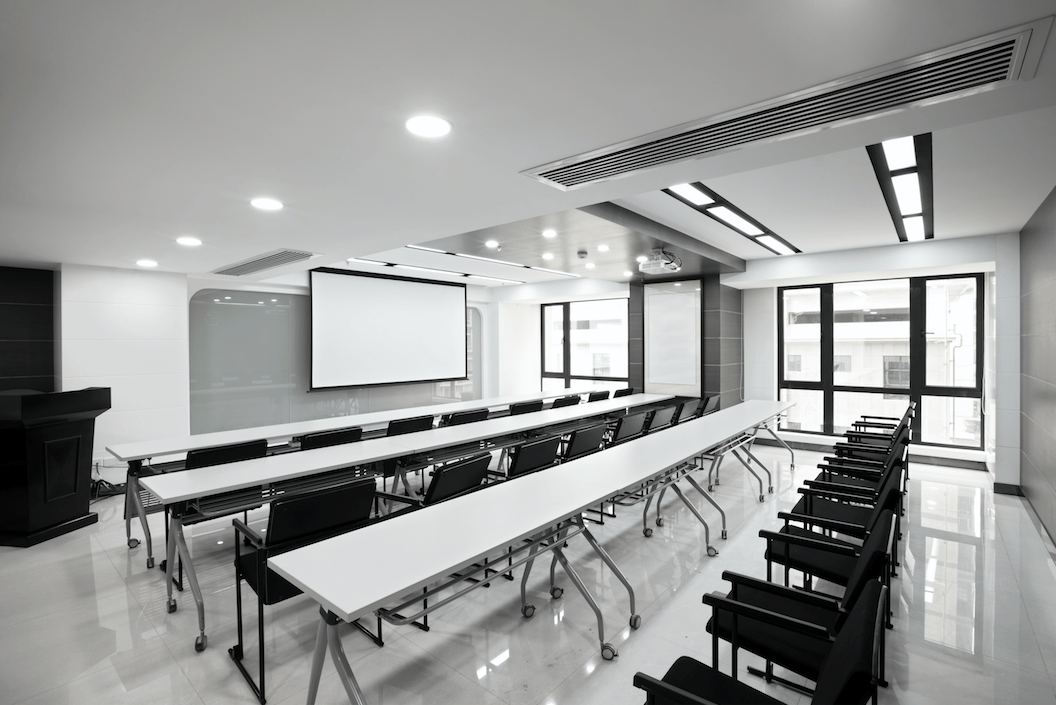The layout of a boardroom plays a crucial role in the productivity of the people sitting and meeting in it.
The configuration of the seating can impact the feel and flow of the meeting by ensuring participants are comfortable and their attention focused in the right place.
However, the layout used will depend on several factors. There is never one layout that works for all meetings, and the type of meeting or event, as well as the number of people attending, will influence the layout of the room.
With that in mind, here are some of the best layouts to consider for your boardroom or meeting space.
This is the most common style for boardrooms and meetings, and it is the one that employees will be most familiar with. It consists of a large table in the centre of the room, usually rectangular or oval, with chairs positioned around it.
This is suitable for meetings that do not involve too many people, such as board meetings or team meetings; where there is no need for individual presentations, and where the real focus is on discussion and debate.


This is where you position a number of tables end to end to create a U-shape. Chairs are positioned around the outer edge of the table configuration, and the space in the middle can be used for presentations.
This is ideal for meetings where participants will be making presentations but there is still an element of group discussion. You might choose this layout for workshops, annual meetings and training sessions where there is a need to generate conversation with the speaker, and where people can also take turns speaking in the middle.
This is a cross between the boardroom style and the U-shape style where the tables are set up in a square shape with a space in the middle, so there are people sitting on each side.
The empty space in the centre is used by a speaker to address different people, and the people sitting around the outside can also hold discussions in smaller groups. It is ideal for encouraging more interaction, and the speaker can also be a moderator who visits each section of the table as they work on solving problems.


Also known as the school style, this is where the room is set out like a classroom with the audience positioned in rows of tables all facing the main speaker at the front.
This is useful when the focus of the meeting is on presentations and audience participation, much like a lecture. The attendees might also hold smaller group discussions following the presentation. As a result, this makes it a great choice for training events.
These four styles are some of the most common used for meeting spaces and boardrooms, but there are many others to consider, such as:
There are many different layouts for meeting rooms because there are many different types of meetings. It is not that one is better than the other. Instead, consider the purpose of your meeting and choose a layout that facilitates this. That way, you can ensure every meeting is more productive.